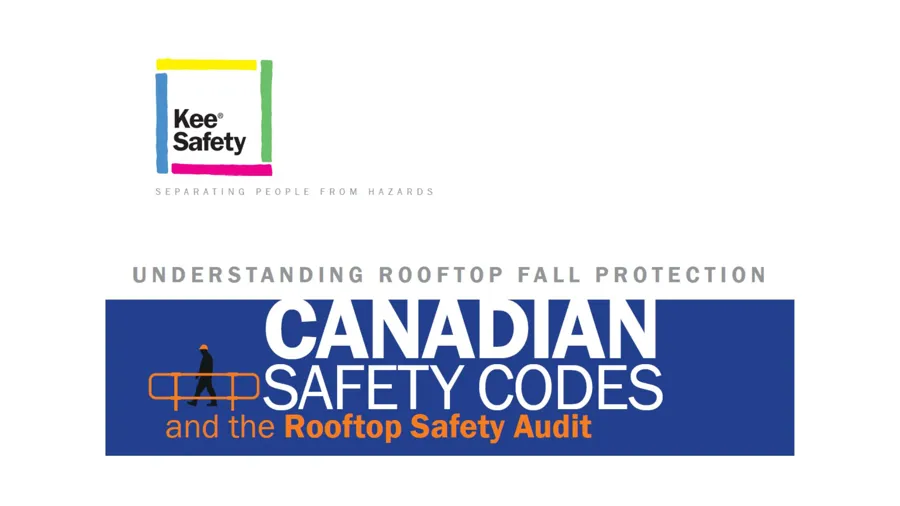
You are visiting the Canada Kee Safety website from United States. Would you like to go to the United States site?
Roof fall protection equipment takes on many shapes and sizes, especially for roof anchor systems. There are several types of roof safety anchors, and they all are designed to provide a roof tie-off system—a connection point—for a worker using Personal Fall Protection System (PFPS), notably a harness with a lanyard and lifeline. Anchor fall protection is often used when a collective fall protection system, such as a railing system, is not installed.

A proper fall protection anchor is not just any point on a roof to which a rope or lifeline can be attached. It must be strong enough to have a Safety Factor of 2. That means it must withstand twice the force of a fall in any direction or double the potential impact of a falling worker.
Most commercial, institutional, and industrial (CII) buildings—including standing seam metal roofs—have flat or low-sloped roofs that are conducive to planting roof anchors. Most residential (and some CII) buildings have steep-sloped roofs.
There are a host of roof fall protection anchors for residential buildings that clamp or fasten to wood frames. Some are reusable, and some are designed to be thrown away after one use.
This review will focus on engineered roof fall protection anchors for flat, low-slope, or standing seam metal roofs. They usually require a Qualified Person, someone with the knowledge, experience, and capability to ensure the proper design, installation, and training for rooftop safety systems.
Permanent roof anchors can be installed on a wide range of roofs (e.g., membrane, green, bitumen, steel). They can be bolted, cast, welded, or otherwise mounted to steel, wood, or concrete and have an eyebolt at the anchor point to connect immediately to a lifeline. Roof anchor testing should be conducted to ensure proper installation.
A PFPS with a roof safety anchor is a fall arrest system, not a fall prevention system. Anchors with lifelines should be placed so that the worker does not go over the edge of the roof in the event of a fall. And there is no cause to be stingy regarding rooftop safety. Enough anchors should be situated to allow access to the entire roof area that workers will need to access.

Mobile or portable roof anchor systems are ideal where guardrails or permanent anchors are not practical or possible. They have a deadweight anchor system with a central pedestal for tie-off. When used with a harness and lifeline, there should be sufficient travel restraint to the worker cannot fall over the roof edge.
A horizontal lifeline system has multiple anchor points and is more complicated than rigid anchors. Unlike a rigid anchor that provides tie-off with a limited radius for one worker, a horizontal lifeline protection system typically accommodates more than one worker with ready access to a greater area on the roof. Due to the system’s complexity, it must be installed and tested by trained and certified installers.
On buildings that do not have a protective rooftop guardrail system, a worker accessing the roof invariable wears a harness, lanyard, and lifeline. This PFPS must be connected to a roof anchor that is properly installed, tested, and meets the requirement for a Safety Factor of 2.
The roof anchor system can be permanent or mobile/portable—or be a component of a horizontal lifeline fall protection system. That is a decision best left to a qualified person who understands the scope of the roof and the tasks workers must perform on the roof.

What experts look for when performing a rooftop safety audit and how to improve worker safety with solutions that exceed OH&S compliance.